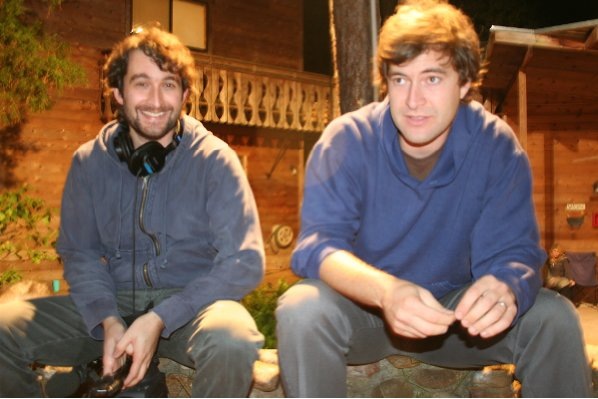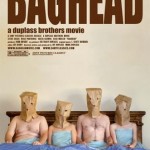There has been a large surge of DIY (do it yourself) projects thanks to the current recession, lack of money and the internet. With the rise in popularity of sites like Lifehacker and Design Sponge, DIY projects have grown a substantial amount since the mid 2000s. Want to know how to open a wine bottle with a shoe? How to make books into floating bookshelves? Shoot and edit an entire film? It is available online. It has become easier than ever to shoot, produce, edit, and distribute movies right out of your own home. The surge in electronics that are hugely popular and has "good enough" quality has brought something like mumblecore into existence.
Filmmakers have been making cheap, relevant movies since the invention of consumer priced video cameras. Low budget films typically fall under the blanket of "independent," but in the past decade a group of filmmakers started to push low budget to a new level. "Mumblecore" is the unofficial term that these extremely low budget films have begrudgingly taken on. For those of you who don't know, mumblecore is a new film trend/genre that started around 2002 and has grown over the past decade. The main components of mumblecore are:
- The cast is unprofessional actors (or pretending to be)
- Improvised script. (Kind of like Curb Your Enthusiasm.)
- Extremely low budget.
- Often shot on prosumer grade cameras.
- Focuses on personal relationships of mid-twenty-somethings.
- Characters in the films usually are post-college and working at low paying or entry-level jobs.
The ideas are always simple, never a lot of characters, and are usually naturally lit. Other common components within the films are references made towards the process of movie making. In Baghead (2007) the movie starts with a filmmaker talking about how he shot a movie with a thousand dollar budget. He goes on to say, "Hollywood would have you believe that you need millions of dollars to make a movie... some of the scenes in the movie were completely 'real.' The actors in the movie often did not even know they were being filmed until weeks after when I showed the movie." Humpday has scenes such as this but pushes it to a heightened level, tackling not only the film industry, but the pornography industry as well.
I was extremely skeptical of Humpday (2009, directed by Lynn Shelton), based on the previews. But I was surprised. The dialogue has a "realness" that most movie and TV shows lack. All the awkward pauses of regular conversation are there; the uneasy gestures, the weird moments. Most of the film revolves around wanting to make art or do something great. The movie plot reminds me of the way that college grads want to do something great but not put in the effort. It felt like watching an edited version of someone's life rather than a movie, which is a nice change from the well-crafted dialogue of directors like Quentin Tarantino.
It is easy to see how something like mumblecore could catch on. Usually the people in the films have no money, work crappy jobs, and are just getting by. Those watching these movies are likely in similar situations, and it makes it easier for the masses to relate. The actors also tend to have "regular," or unacceptable Hollywood bodies, and look like average Americans. The scenes usually go on for a while and the characters ramble on about the same subject. To go along with the raw dialogue, the quality of the filming and camera work is never better than average. Watching mumblecore can make the viewer think, "I could make something like this!" Mumblecores popularity could not have existed before things like youtube, flip video cameras, netbooks, and iphones. Even with the increase in sales of HD televisions, people have accepted low quality in a way they never have before. "It does what I need it to do," seems to be the mantra for any electronic equipment purchases made today. Mumblecore is a result and acceptance of mediocre technology, having no money, and wanting to create without having to be stifled by the standards of Hollywood.
Another influence that brought this new genre to fruition is the rise of reality television over the past two decades. Shows like The Real World, The Osbournes and more recently Keeping up with The Kardashians (to name a few), have the dialogue pattern that mumblecore movies share. The camera angles are shaky and unplanned, things seem rushed, but the masses can relate to that as a style because of the reality TV boom of the 90s. Reality television along with the rising popularity of zany or awkward comedies (anything directed by Wes Anderson or has Will Ferrell and friends in it), gives mumblecore films the legs to become enjoyable to a broader audience.
Mark and Jay Duplass, also known as the "Duplass Brothers," seem to release a mumblecore film for Sundance every two years. They wrote The Puffy Chair and starred in Humpday. This year at the Sundance Film Festival, they debuted Cyrus, which they wrote and directed. Cyrus' is a complete departure from any project they have done before. It was funded by Fox Searchlight and has a cast reminiscent of 40 Year Old Virgin or Superbad with actors like Jonah Hill, John C. Reilly, and Marisa Tomei. This cast is poised to break them from the independent scene and into the mainstream.
At this time I have only seen 5 of about 25 or so films that could easily fit into this genre. But since the start of mumblecore, every year more get closer to mainstream acceptance. It both makes sense and is strange that something like mumblecore could emerge as a trend. I think it gives filmmakers an outlet for getting their ideas out in the world that is both cheap and easy to create. Many mumblecore films are also available on director's websites or Netflix instant watch with the recent increase of streaming movies available for users. It is now easier than ever to film, edit, and distribute your own movie. I am excited for the possibilities, and can't wait for the next decade of both low-budget, and Hollywood adaptations of mumblecore films.
- Promotional poster for Baghead
- Promotional poster for Hump Day
Duplass brothers image found here.
"Hump Day" image found here.
"Baghead" image found here.







